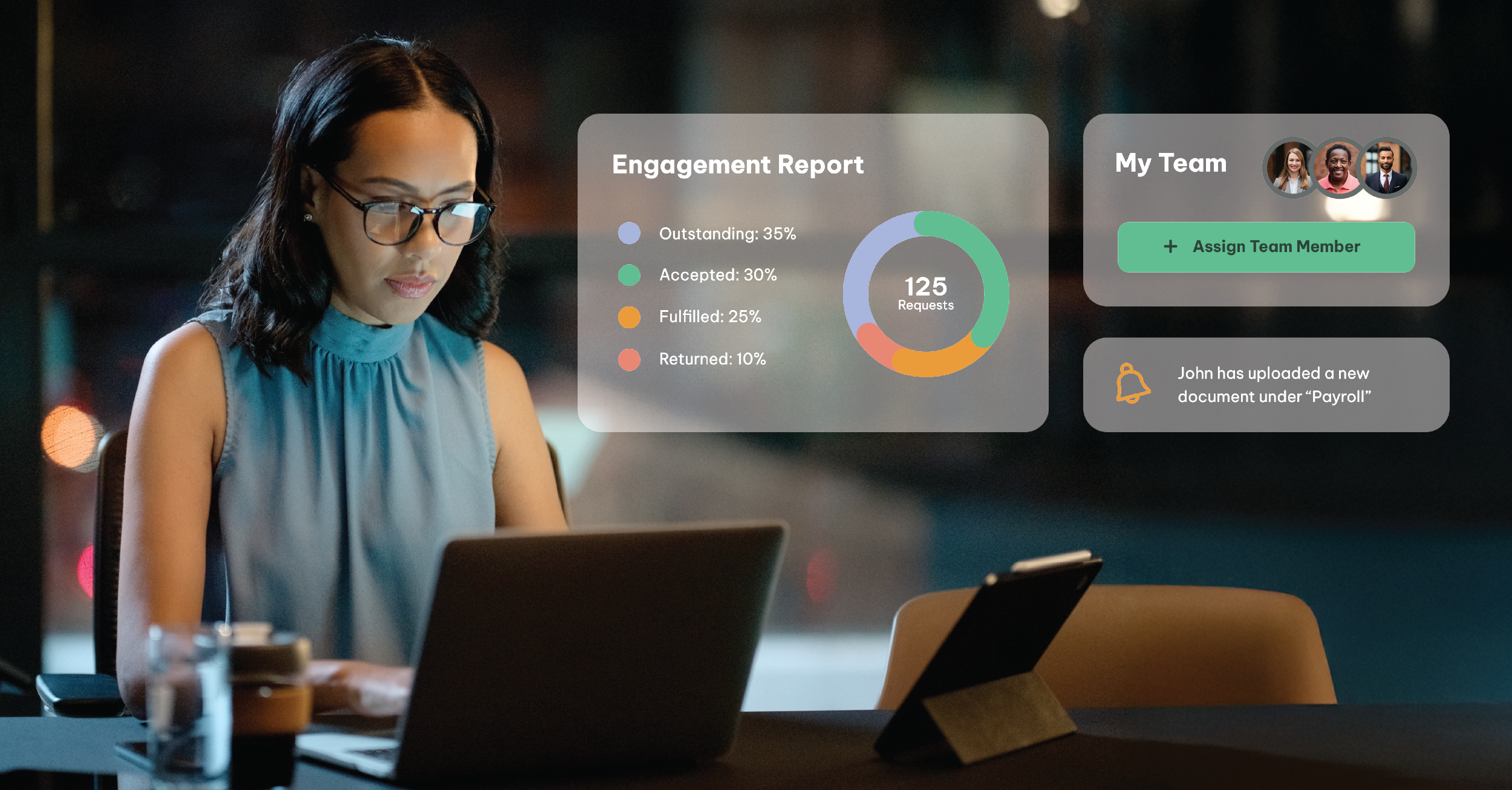May 17, 2025 7:00:00 AM |

Audits aren’t new. They’ve been around for decades—giving investors, regulators, and the general public the confidence they need to trust financial statements. But while the purpose of an audit hasn’t changed, the way audits are done definitely has. What used to be a slow, manual, paper-heavy process (think binders stacked to the ceiling and endless days onsite) has evolved.
Thanks to modern audit management software—and platforms like Suralink—engagement teams now have access to digital tools that streamline the entire audit lifecycle. It’s faster, more secure, and a whole lot less frustrating.
What Is Audit Software?
Let’s get one thing straight: audit software is not the same thing as accounting software. Tools like QuickBooks or NetSuite are designed to help businesses manage their own books—handling things like payroll, invoicing, AP/AR, and financial reporting. That’s the company’s side of the ledger.
Audit software, on the other hand, is built specifically for auditors. Its job? To support engagement teams through every stage of an audit—whether that’s a financial audit, an internal audit, or even an IT audit. The goal is to make the audit process faster, more organized, and less reliant on manual, repetitive work.
That means giving auditors the tools to:
-
Organize and manage audit documentation efficiently (think corporate audit software like Caseware, CCH Engagement, or Thomson Reuters Engagement Manager)
-
Perform risk assessments and design procedures with the right structure and traceability
-
Automate time-consuming tasks like sample selection, testing, and tick-marking using tools like Caseware IDEA, DataSnipper, Suralink Workpaper Suite, or Trullion
-
Collaborate with clients and manage PBC requests in a streamlined, frustration-free way with platforms like Suralink’s Request List Management or ShareFile
At its core, financial auditing software helps automate what can be automated—and frees up time and headspace for the parts of the audit that actually require your professional judgment. It’s about working smarter, not harder. And in today’s digital-first environment, having the right software for auditing isn’t just helpful—it’s essential.
Key Features of Audit Software
There’s no shortage of auditing softwares out there, but at the end of the day, good tools have one job: to make life easier for the engagement team. Whether that’s by cutting down on repetitive tasks, keeping everything organized, or improving collaboration with clients, the right features should save time, reduce risk, and improve the overall audit experience—for both your team and your clients.
Here are a few core features that top financial audit software typically brings to the table:
Workflow Automation
From sample selection to testing to sign-offs, workflow automation helps eliminate busywork and reduce human error. The result? More time for critical thinking and less time clicking through spreadsheets.
Audit Documentation & Planning Tools
Centralized platforms that support audit planning, risk assessment, and documentation help engagement teams stay organized and aligned. This is where binder software shines—making it easier to manage workpapers, link procedures to assertions, and ensure nothing falls through the cracks.
Client Collaboration & PBC Management
Some of the biggest audit delays come from tracking down documents or answering endless client emails. Tools like Suralink help streamline this process, offering a secure, centralized space for sharing requests, uploading files, and communicating in real time.
Compliance Monitoring & Audit Trails
Built-in compliance monitoring features make it easier to meet standards like GAAS, PCAOB, or internal firm policies. Plus, detailed audit trails help firms stay accountable and ready for review.
Issue Tracking & Corrective Actions
Identifying issues is one thing. Tracking them through to resolution—with a clear record of findings, corrective actions, and sign-offs—is what helps teams improve financial auditing quality over time.
System Integration
The best audit software plays nicely with other tools in your firm’s ecosystem. Whether it’s pulling in data from your ERP, syncing with your DMS, or connecting to tax platforms, integration helps eliminate duplicate work and ensures smooth collaboration. Many tools offer open APIs or pre-built integrations, so you can build a custom stack without reinventing the wheel.
While no single tool on a list of audit software will check every box, the right combination—tailored to your firm’s needs—can dramatically improve consistency, compliance, and client satisfaction.
Why Audit Software Matters in Modern Accounting
Today’s accounting firms aren’t just trying to keep up—they’re trying to stand out. In a competitive landscape where firms are looking to grow, streamline operations, and drive revenue, having the right auditing software in place is a key differentiator.
But speed isn’t everything. In audit, effectiveness and efficiency must go hand in hand. Getting through engagements quickly means nothing if quality is sacrificed.
That’s where audit management software shines.
By digitizing and optimizing core processes, today’s platforms reduce human error, enhance engagement consistency, and improve regulatory compliance. This is especially critical when protecting sensitive client data—an area under more scrutiny than ever.
Let’s not forget about audit documentation. Whether you’re facing a peer review, PCAOB inspection, or internal QA, having a clear, traceable audit trail is essential. Good software captures who did what, when, and why—something that’s nearly impossible to replicate manually.
Modern platforms also enable real-time collaboration and transparency, both internally and with clients. With better tools in place, requests don’t fall through the cracks, and documents don’t get buried in email chains. Teams stay focused on adding value, not chasing down files.
In short, software for auditing is no longer a nice-to-have—it’s a strategic advantage.
Traditional Challenges Without Audit Software
Before corporate audit software became the norm, engagement teams had to rely heavily on manual processes—and many still do. The work gets done, but it’s slower, more error-prone, and more frustrating.
Here are a few common roadblocks:
-
Version control issues
-
Limited visibility into progress
-
Siloed communication
-
Security risks related to sensitive data
Now consider a common task like expense testing. A single sample might require matching invoice data across multiple documents—amounts, vendor names, payment details, etc. Preparers dig through files and check off fields manually, then reviewers re-perform the same steps.
Multiply that across dozens of samples and dozens of audits, and you’ve got a serious efficiency problem.
Modern tools like the Suralink Workpaper Suite can:
-
Extract data directly from uploaded support
-
Highlight inconsistencies
-
Auto-fill fields and tickmarks
-
Maintain a review-ready audit trail
Without these tools, firms risk wasting time, increasing errors, and burning out staff—all while delivering a less-than-ideal client experience.
How Suralink Enhances the Audit Engagement Experience
At Suralink, we believe great audits happen when both sides—engagement teams and clients—are empowered. That’s why our platform is designed to improve the audit experience across the entire audit lifecycle.
Our Request List Management tool acts as a single source of truth for client collaboration—eliminating email clutter, streamlining communication, and ensuring requests are clear and complete.
For audit teams, our Workpaper Suite transforms tedious testing processes. Whether you’re verifying invoice data or documenting conclusions, it reduces prep time and simplifies review—with tools built specifically for financial auditing and internal audit workflows.
Key benefits include:
-
Real-time collaboration directly in your workpapers
-
Fewer duplicate tasks and rework
-
Clearer documentation for regulatory compliance
-
Stronger client relationships built on transparency and trust
From data analytics to real-time reporting, Suralink helps engagement teams reduce friction, minimize risk, and improve quality—without sacrificing speed.
The Bottom Line: Why Audit Software Is a Must-Have for Modern Firms
So—what is audit software, really?
It’s more than a tool. It’s the foundation of a modern, efficient, and high-quality audit process. From managing client requests to documenting every step of the engagement, the right financial audit software helps teams work smarter, reduce errors, and deliver better outcomes.
At Suralink, we go beyond basic functionality. We help firms transform their audit engagements by eliminating manual roadblocks and enabling real collaboration—so teams can focus on what matters most: delivering value, building trust, and raising the bar for every audit.
Subscribe
Get out latest news and tactics that can help you and your business!
By clicking submit you agree to these terms and conditions.

